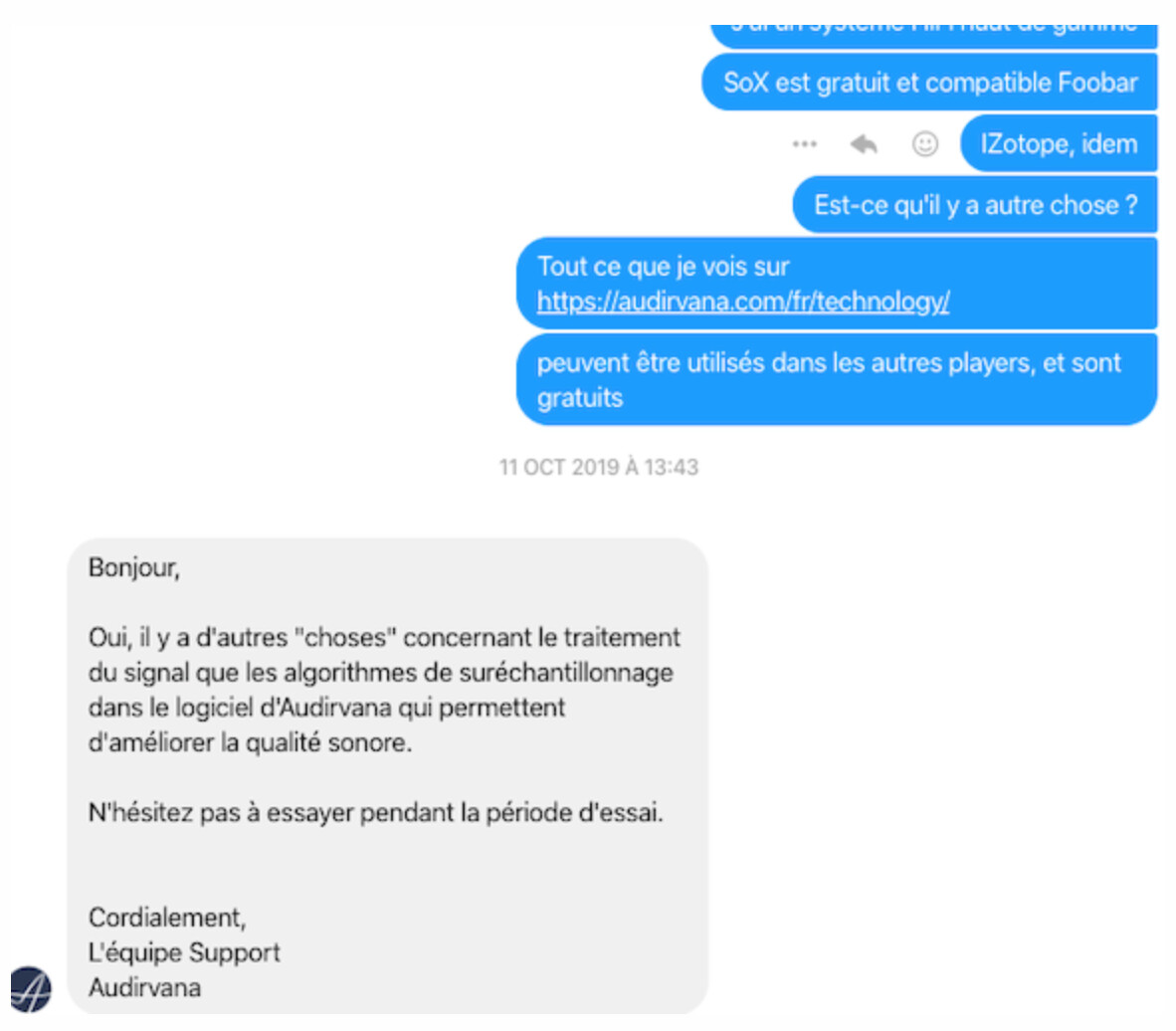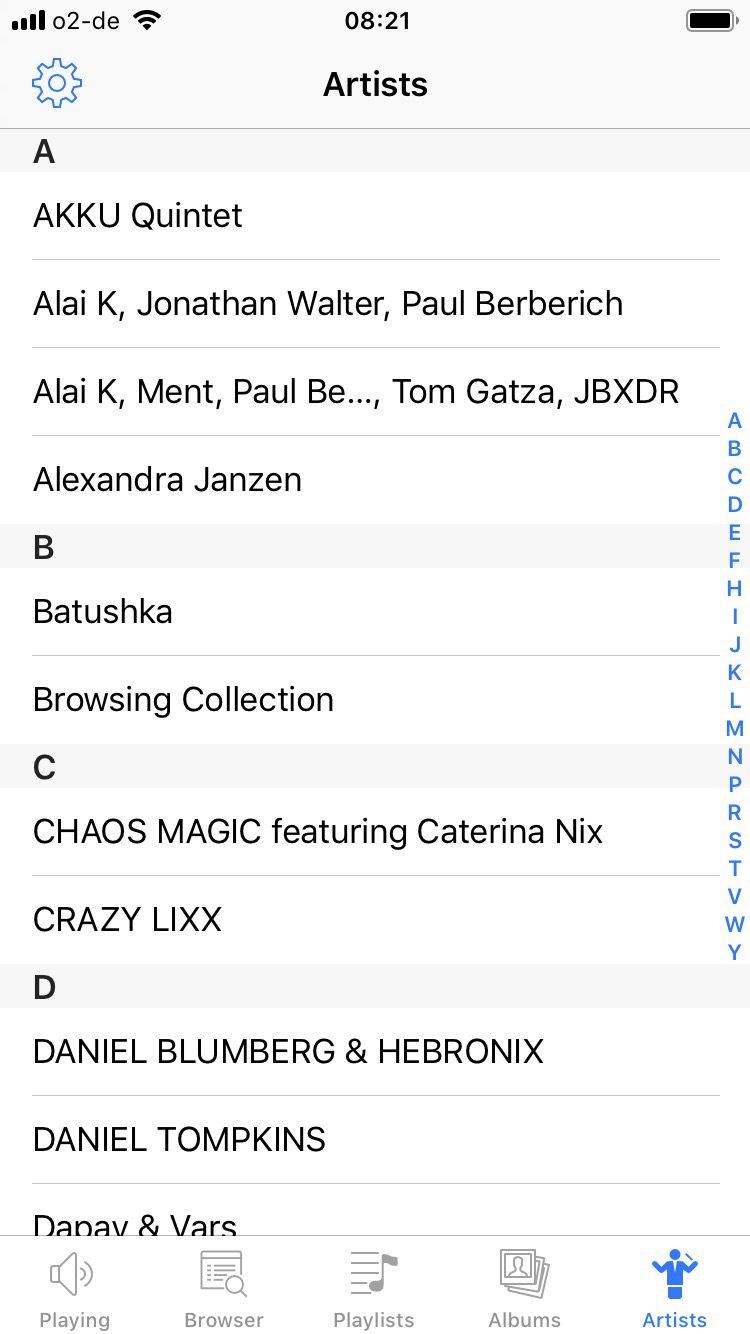


As much as this track sounded clear and transparent, low bass was present but of lesser impact than what I'm used to. Nonetheless, the sonic limitations of using a multipurpose computer as a source became apparent when I played a bass-response demo track given me by Wilson Audio's Peter McGrath: "Limit to Your Love," from James Blake's James Blake (16/44.1 WAV, A&M 949999). Only then did its soundstage widen and its edginess decrease, and listening again become a pleasure.
LIMITATIONS OF AUDIRVANA PLUS DEMO PRO
While previous listening had convinced me that the sound of files played from a computer could not equal that from the Network Bridge, my MacBook Pro came into its own after I'd spent half an hour subjecting it to warm-up and demagnetization tracks.

Around the same time, I switched amplification from my Pass Laboratories XA200.8 monoblocks to Dan D'Agostino Master Systems Progression monoblocks, which, from previous experience, I expected to deliver tighter, stronger bass, as well as more detail and wider dynamic range. I didn't hear the level of color saturation I know this recording contains, but that may well be because I was listening to PCM 16/44.1 instead of DSD64.Īfter John Atkinson pointed out that almost no-one who buys a Formula xHD will own a dCS Network Bridge, out came ye olde MacBook Pro running Audirvana Plus, a Nordost Valhalla 2 USB cable, and two AudioQuest JitterBug USB noise attenuators. Focus was excellent, with beautiful warmth and fullness in the midrange, a sweetness to the sound, and a credible halo of air around the violin. Given that I also heard less bass foundation and natural treble ring than usual, the joy at the center of this superb performance touched me less.Īlthough I couldn't play the two-channel DSD layers of SACDs from my Paganini transport, which requires a DAC with dual AES/EBU inputs, I listened to the 16/44.1 layer of a recording of Vadim Gluzman performing Brahms's Violin Concerto, with the Lucerne Symphony Orchestra under James Gaffigan (SACD/CD, BIS 2172). When I turned to Murray Perahia's recording (on piano) of one of my favorite Handel works, the Harpsichord Suite in E, HWV 430 (CD, Sony Classical 62785), his instrument was less naturally percussive than I'm accustomed toit sounded as if the soft pedal was depressed. In addition, the deepest resonances of the voice and the bottom line of the piano were shortchanged. Some of the gruffness that has recently surfaced in the voice of baritone Matthias Goerne is audible in his and pianist Markus Hinterhäuser's recording of "Meine Rose," from Schumann's Six Poems, Op.90, on their recital Einsamkeit (24/96 WAV, Harmonia Mundi HMM 902243/HDtracks)but the Formula xHD smoothed it over. Ditto Beverly Sills's performance of Richard Strauss's transcendentally beautiful song "Breit' über mein haupt," with Aldo Ceccato conducting the London Philharmonic, from The Art of Beverly Sills (CD, EMI Classics 64425/ArkivCD): the midrange was gorgeous, but the highs seemed less radiant than I'd hoped for. That said, her highs were softer and didn't float as freely as I'm accustomed to hearing, and the cello section of the Columbia Symphony Orchestra (conducted by Max Rudolf) had less weight.

Through the Formula xHD her low tones sounded wonderful, and the warmth of her voice remained intact. One familiar recording that I love, and play regularly to test systems, is Eileen Farrell's Sings Verdi (CD, Sony Classical Masterworks 62358/ArkivCD). Burning it in further while reviewing soprano Sonya Yoncheva's The Verdi Album, with Massimo Zanetti conducting the Munich Radio Orchestra (CD, Sony Music 0889854179823 24/96, Primephonic), I finally noticed the emergence of a three-dimensional soundstage, and the Formula xHD's ability to reveal the changing colors and weights of voice and orchestra as emotions shiftedas well as moments when Yoncheva's vocalism was less than spot on. Three days and three pages of extremely detailed notes later, after the Formula xHD had passed the 400-hour mark, its top began to open up, revealing a sound suffused with light and a beautiful, warm midrange.


 0 kommentar(er)
0 kommentar(er)
